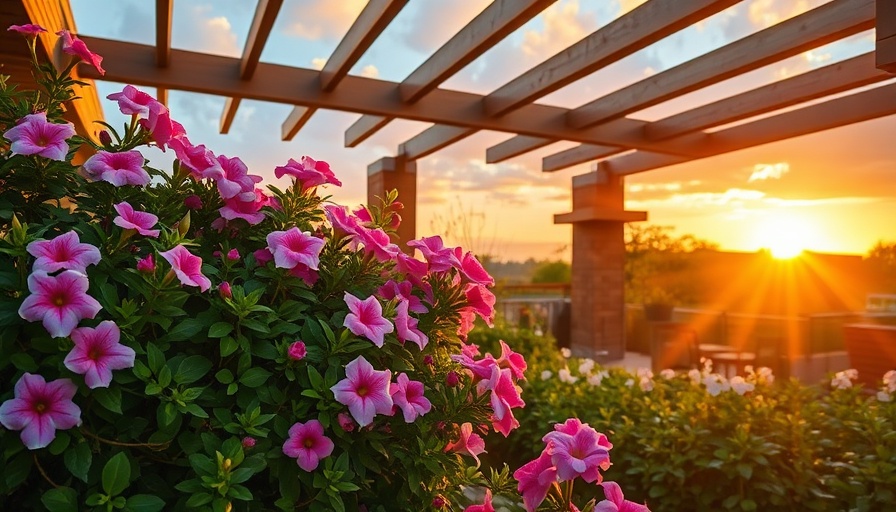
Embracing the 70/30 Rule in Gardening: A Path to Balance
The 70/30 rule in gardening has turned from a simple guideline into a multifaceted strategy that caters to various aspects of garden management. Whether you interpret it as devoting 70% of your garden to established plants while using 30% for experimentation, or envisioning 70% living plants versus 30% hardscaping, this rule provides a balanced framework that fosters creativity while maintaining reliability. Like a seasoned gardener nurturing both new blooms and rooted perennials, this approach acknowledges the necessity of both tradition and innovation.
Utilizing the Rule for a New Garden Design Edge
With garden designs becoming increasingly complex, having a standard like the 70/30 rule offers clarity. Homeowners looking to enhance their outdoor spaces can apply this principle to cultivate plants that thrive under local conditions while experimenting with lesser-known varieties. For example, a vegetable garden might contain 70% staples such as tomatoes and zucchini, while the remaining 30% could introduce heirloom varieties or unique offerings like purple carrots. This not only maximizes the productivity of the garden but also adds a layer of interest that keeps the cultivation process inspiring.
The Playful Experimentation of the Remaining 30%
It's the 30% of your garden where fun and exploration take center stage. Experimenting can yield spectacular surprises. Introducing a rare plant can transform your garden into a unique personal sanctuary. In addition to incorporating exotic blooms or seasonal oddities, this space can be used to trial new gardening techniques or conservation measures, which might reflect broader environmental priorities like biodiversity and resistance against climate challenges.
Understanding the Balance of Hardscape and Greenery
Utilizing the 70/30 strategy extends beyond just plant placement. It also allows for thoughtful consideration of hardscape elements. Devoting 30% of your space to hardscaping can include paths, patios, or decorative features that enhance the function and aesthetic of the garden. This balance not only adds beauty to the landscape but also creates areas for relaxation and enjoyment that complement the vibrant life in your garden. Consider how hardscape elements can define spaces – a stone path leading to a zen garden corner can serve as a perfect retreat.
Practical Tips for Implementing the 70/30 Rule
To effectively implement the 70/30 rule, begin by conducting a thorough analysis of your existing garden. Assess elements such as moisture, sunlight, and climate compatibility to determine reliable plants that already thrive. From there, you can select a few choice unique varieties to introduce, ensuring they meet similar growing conditions for seamless integration. As you introduce the new elements, keep in mind seasonal changes and place plants where they can thrive while enhancing visibility and access.
Long-Term Success with the 70/30 Approach
Applying the 70/30 rule to your gardening practices can pave the way for successful long-term growth. Gardeners focusing on 70% of their resources on soil health and optimal growing conditions while reserving the remaining 30% for engagement and creativity will likely see not only lush growth but an exciting evolution in their outdoor spaces. Enhanced soil promotes healthier plants, enabling even the most novice gardeners to reap rewarding harvests. Each cycle of planting and tending can serve as feedback for refining your own gardening practices.
Conclusion: Nurture Balance for Flourishing Gardens
The 70/30 rule unfolds a new perspective on gardening that embraces both tradition and innovative practices. By balancing reliable results with room for experimentation, gardeners can curate vibrant spaces that serve as sources of inspiration year-round. Creativity thrives on this foundation, while growth benefits from tried and tested techniques. Balancing these elements ensures not just the beauty of the garden but also cultivates a community of lifelong learners eager to deepen their understanding of gardening.
Ready to transform your garden? Start applying the 70/30 rule today, immerse yourself in the joy of gardening, and watch as your backyard blooms to life!
 Add Row
Add Row  Add
Add 




Write A Comment